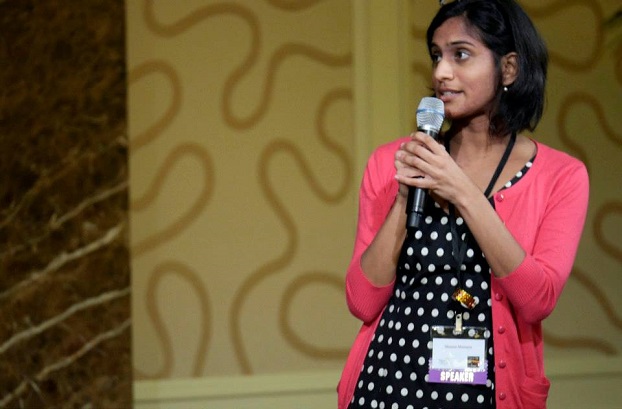On a human level, people can learn about Indian Americans, who are their neighbors, their classmates, their colleagues. So many of us are asked the question: where are you from? I hope this exhibit helps to contextualize that question and to combat basic stereotypes of Indian Americans.
In terms of putting together such a pivotal exhibition about the Indian American community, how did you involve the community in the various phases of putting together the exhibition? And in the Indian American Heritage Project, overall?
Involving the Indian American community is an ongoing process. First we did outreach to leaders in the community. We also created a national panel of academic scholars on South Asian American history. We also issued open calls for photos and stories. We had a specific open call for family photos. We also had a call for shoes. Even though the exhibition is finalized, we’re still getting stories from people. But this exhibition is just the starting point — a starting point for future exhibits and social media initiatives to tell these stories. What will be shown at the Smithsonian is a mosaic of all these stories. Given that there are 3.3 million people of Indian origin in the US, we couldn’t reach all of those folks but at least we can get a cross-section that is representative.
What is one item in the exhibition that you’re most excited about?
I was able to include art by young, emerging Indian American artists in this exhibition, who are taking on questions of identity that were not captured by other parts of the exhibition. So, here, art is part of the story and reflects the questions I want to pose to the audience.

We’ve talked a lot about the Indian American Heritage Project and Beyond Bollywood but I want to shift the focus to you. Tell me a bit about your personal background.
I was born in Elgin, Illinois. My dad immigrated from Bombay in 1965 and my mom immigrated from Cochin in 1970. I was an only child with extended family in India. I grew up hearing their stories of immigration, what they loved about this country and the discrimination they faced. And I could see the similarities in the stories of immigrants.
In terms of your professional life, how did you get into museum curation?
I never knew what a museum curator was but I spent a lot of time with my grandfather in India while growing up. He was someone who embraced lots of cultures and was a collector — of books, art objects. I think I inherited this (collecting, curating) from him. He cared about and valued these things. It was a seed planted in me early on.
When I think about curation, I think it involves managing art, academia, and social change. It involves creating and sharing stories, broadening the stories that get told, and posing questions through art. This type of work complements policy and advocacy work because it helps to chip away and reshape the social narrative.
What drew you to take the role as curator for the Indian American Heritage Project and the Beyond Bollywood exhibit and what does it mean to you as an Indian American?
[pullquote align=”right”]I never doubted the importance and impact of this exhibition.[/pullquote]I think what drew me to this role was the importance of the work and the adventure I knew it would be. For example, I consulted with communities across the country to get stories and many had strong opinions on how to tell those stories. I never doubted the importance and impact of this exhibition. Even if there’s just one photo or quote that resonates with them, then I’ve done my job. I think about the goal of those who started this: seeing us here. That is, seeing Indian American stories in the Smithsonian. We’ve never seen ourselves here. I think about belonging and creating a sense of belonging. Anyone who has lived in the margins and experienced discrimination — I can help them feel they belong. Then I’ve done my job.
Is there anything that you learned during the process of curating this exhibition that truly surprised you?
I think the most surprising thing was learning about early Indian immigrants to the U.S. They came to work on farms. We, as Indian Americans, have had our hands in every aspect of building this country — working on multi-generational farms, building railroads, building lines of trade, taking issues of race to the Supreme Court. To know that our hands were part of building all of this will be surprising to those who come to the exhibition.
What are the long-term goals of the Beyond Bollywood exhibition? Of the Indian American Heritage Project?
The long term goals are first, to make sure this story is told not just here at the Smithsonian but around the country, in places with large and small Indian American communities. Secondly, this will serve as a starter of conversations — conversations between generations, conversations between classmates, conversations at the office watercooler, conversations between political and advocacy groups working on issues like immigration — and in this way engender social change. We don’t know where these conversations will go but perhaps it will give people a different way in, and counter the popular stereotypes they see in the media.
Learn more about the Smithsonian Indian American Heritage Project and the Beyond Bollywood exhibition, which opens on February 27.
After 15 years developing and leading innovative programs in the social change sector, Kavita Das now serves as a nonprofit consultant and writes nonfiction and creative nonfiction. Connect with Kavita on Twitter @kavitamix.













This is awesome! Can’t wait to see the exhibit!